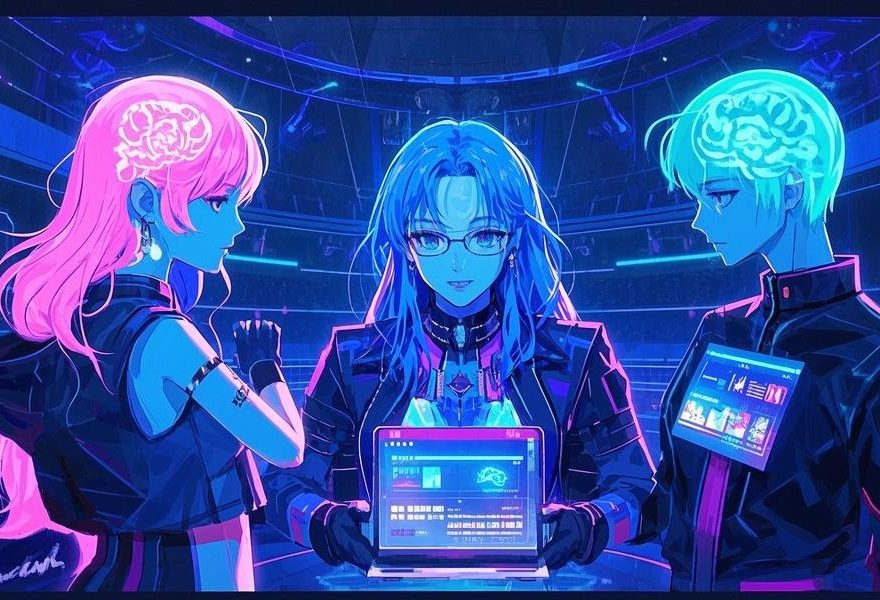The Formula of Brainwave Interaction Technology Behind TikTok’s Holographic Idol Concerts
In recent times, TikTok has been at the forefront of integrating cutting – edge technology into the entertainment realm. One of the most remarkable innovations is the holographic idol concerts that have taken the world by storm. These concerts are not just about the dazzling holographic projections of beloved idols but also about the revolutionary brainwave interaction technology that adds a new dimension of interactivity.
The Basics of Holographic Projection in Concerts
Holographic technology in concerts has been evolving over the years. The concept dates back to earlier experiments where lifelike three – dimensional images of artists were projected onto the stage. For example, at the 2006 Grammy Awards, Gorillaz used the Musion Eyeliner system to give a “live” performance, which was one of the early showcases of holographic technology in a music event. Since then, it has been used to bring back deceased artists like Tupac Shakur, creating a visual spectacle that blurs the line between the virtual and the real. In the context of TikTok’s holographic idol concerts, the holographic projection creates a vivid and realistic image of the idol on stage. Advanced projection techniques, such as using translucent screens and precise lighting, are employed to make the hologram appear as if it is actually present in the concert venue. The idol’s movements, expressions, and even the details of their costumes are rendered with high precision, giving the audience a sense of being in the presence of their favorite star.
Unraveling Brainwave Interaction Technology
Brainwave interaction technology, also known as brain – computer interface (BCI), is a frontier field that allows users to communicate with external devices using their brain signals. This technology has its roots in the understanding that the human brain generates electrical signals when it is active. These signals, which can be detected and measured using electroencephalography (EEG) devices, vary depending on a person’s mental state, such as when they are thinking, concentrating, or feeling emotions.
In the TikTok holographic idol concerts, the brainwave interaction technology works in a fascinating way. Concert – goers are equipped with EEG – based headsets. These headsets are designed to pick up the subtle electrical signals emitted by the brain. The data collected from the headsets is then transmitted to a computer system in real – time. The computer uses complex algorithms to analyze these brain signals and interpret the audience’s mental states. For instance, if the majority of the audience shows high levels of excitement or concentration, the holographic idol on stage may respond in a certain way. It could change the tempo of the song, perform a special dance move, or interact with the virtual environment in a more dynamic manner.
The Seamless Integration of Holography and Brainwave Interaction
The magic of TikTok’s holographic idol concerts lies in the seamless integration of holographic projection and brainwave interaction. This combination creates an immersive experience that goes beyond traditional concerts. The holographic idol becomes not just a visual display but an interactive entity that responds to the audience’s emotions and mental states.
When the audience’s brainwaves indicate a high level of engagement, the holographic idol might engage in a more energetic performance. The lighting and special effects in the concert venue can also be synchronized with the brainwave data. For example, if the audience is extremely excited, the lights may flash more brightly, and the pyrotechnics (virtual or real – looking) may be more elaborate. This real – time interaction between the audience and the holographic idol makes the concert feel more personal and engaging. It gives the audience a sense of agency, as if their thoughts and feelings are directly influencing the performance.
Impact on the Entertainment Industry
The introduction of this brainwave interaction technology in TikTok’s holographic idol concerts has far – reaching implications for the entertainment industry. Firstly, it redefines the concept of a live concert. In the past, concerts were mainly about the artist performing on stage and the audience watching. Now, with this technology, the audience becomes an integral part of the performance. This can lead to a new era of more participatory and immersive live entertainment experiences.
Secondly, it has the potential to revolutionize the relationship between artists and fans. Artists can now have a more direct connection with their fans’ emotions during a performance. They can adjust their shows in real – time based on the fans’ reactions, creating a more personalized experience for each audience. Moreover, this technology can be used to create unique concert experiences that are exclusive to TikTok, attracting a younger and more tech – savvy audience. It also opens up new possibilities for virtual reality (VR) and augmented reality (AR) experiences in the future, as the combination of brainwave – controlled interactivity and immersive digital environments can create truly mind – blowing entertainment experiences.
In conclusion, the brainwave interaction technology behind TikTok’s holographic idol concerts represents a significant leap forward in the entertainment industry. By combining the visual splendor of holography with the innovative interactivity of brain – controlled technology, it creates a formula for an unforgettable concert experience that is likely to shape the future of live entertainment.
















